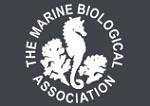APHOTOMARINE
An educational resource dedicated mainly to the photography
and diversity of marine life that can be found in coastal waters
and intertidal areas of Great Britain and Ireland by David Fenwick.

Turbicellepora magnicostata
- zooids 1
Orange peel bryozoan
Turbicellepora magnicostata
- zooids 2
Orange peel bryozoan
Turbicellepora magnicostata
- zooids 3
Orange peel bryozoan
Turbicellepora magnicostata
- zooids 4
Orange peel bryozoan
Turbicellepora magnicostata
- colony under rock 1
Orange peel bryozoan
Turbicellepora magnicostata
- colony under rock 2
Specimen above found on an extra low water spring, ELWS, on the extreme lowershore, under a rock, at Albert Pier Reef, Penzance, Cornwall. 22.01.15. Material was sent to and was identified by Joanne Porter, important because the species was only previously known from the Isles of Scilly in the UK. An Onchidoris species of sea slug was feeding on this bryozoan, it is thought the species might be O. sparsa, but the nudibranch will be DNA tested to discover its true identity.
Orange peel bryozoan
Turbicellepora magnicostata
- under rock on lowershore 1
Orange peel bryozoan
Turbicellepora magnicostata
- under rock on lowershore 2
Orange peel bryozoan
Turbicellepora magnicostata
- lateral view zoarium dome 1
Orange peel bryozoan
Turbicellepora magnicostata
- close-up zooids 1
Specimen above is more typical in that it was found under rocks and boulders on the lowershore at Porthcressa, St. Mary's, Isles of Scilly. 16.05.14.
APHOTOMARINE supports open source data recording and sharing for the benefit of wildlife, recorders, research, science and education. The project recommends the following websites and works with the following bodies and organisations.
The Marine Biological Association or MBA, based in Plymouth, is one of the world’s longest-running societies dedicated to promoting research into our oceans and the life they support. Since 1884 the MBA has been providing a unified, clear, independent voice on behalf of the marine biological community.It has a growing membership in over 40 countries.
The National Biodiversity Network or NBN is a charity that supports open source data sharing and recording supporting conservation, science and education. "Why do recorders need open source?". Simply because it supports the core values of wildlife recording and the free use of records and data over a very wide network that includes partners like the Natural History Museum.
The taxonomy used here is based on that of the following database, which is also used by the MBA, NHM and the NBN.
The World Register of Marine Species or WoRMS.

